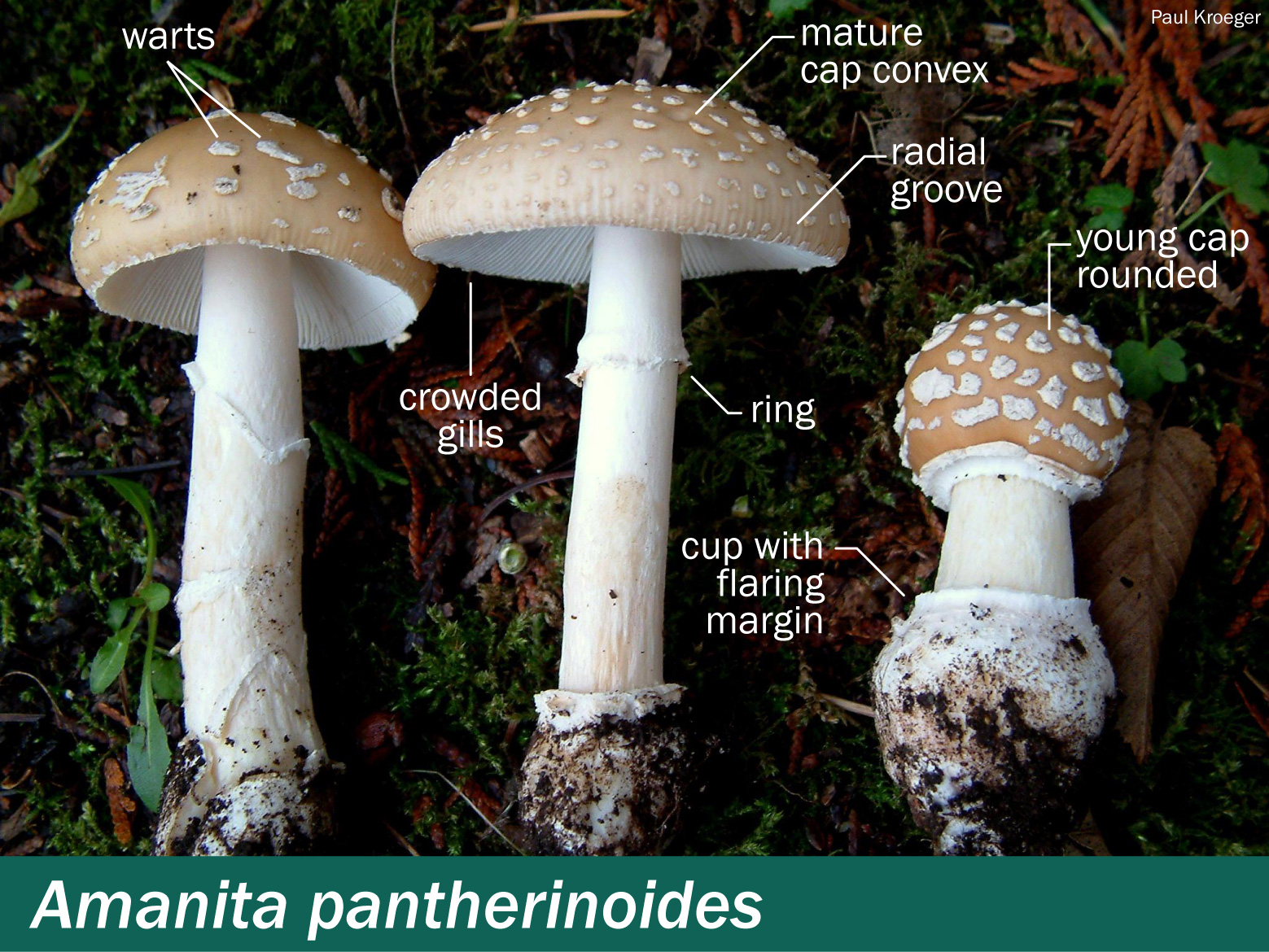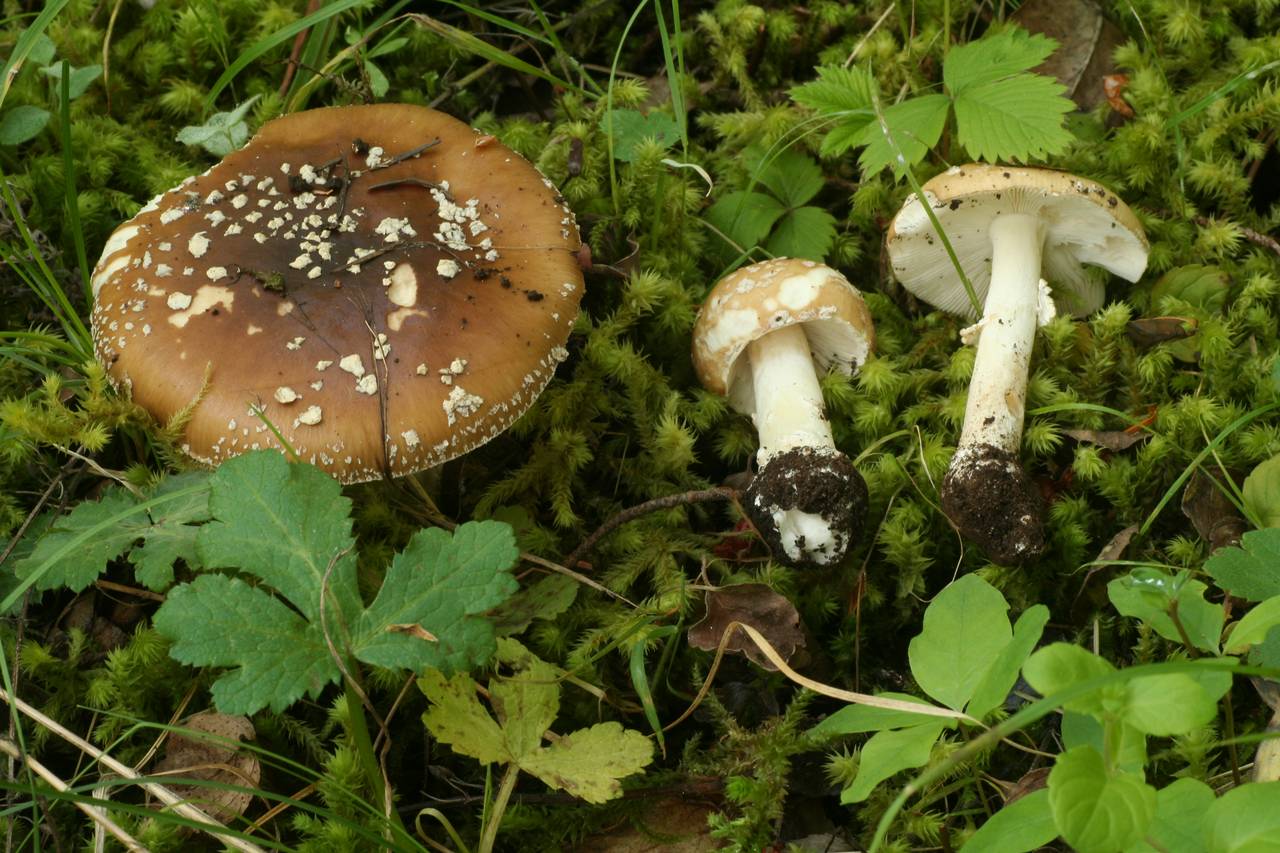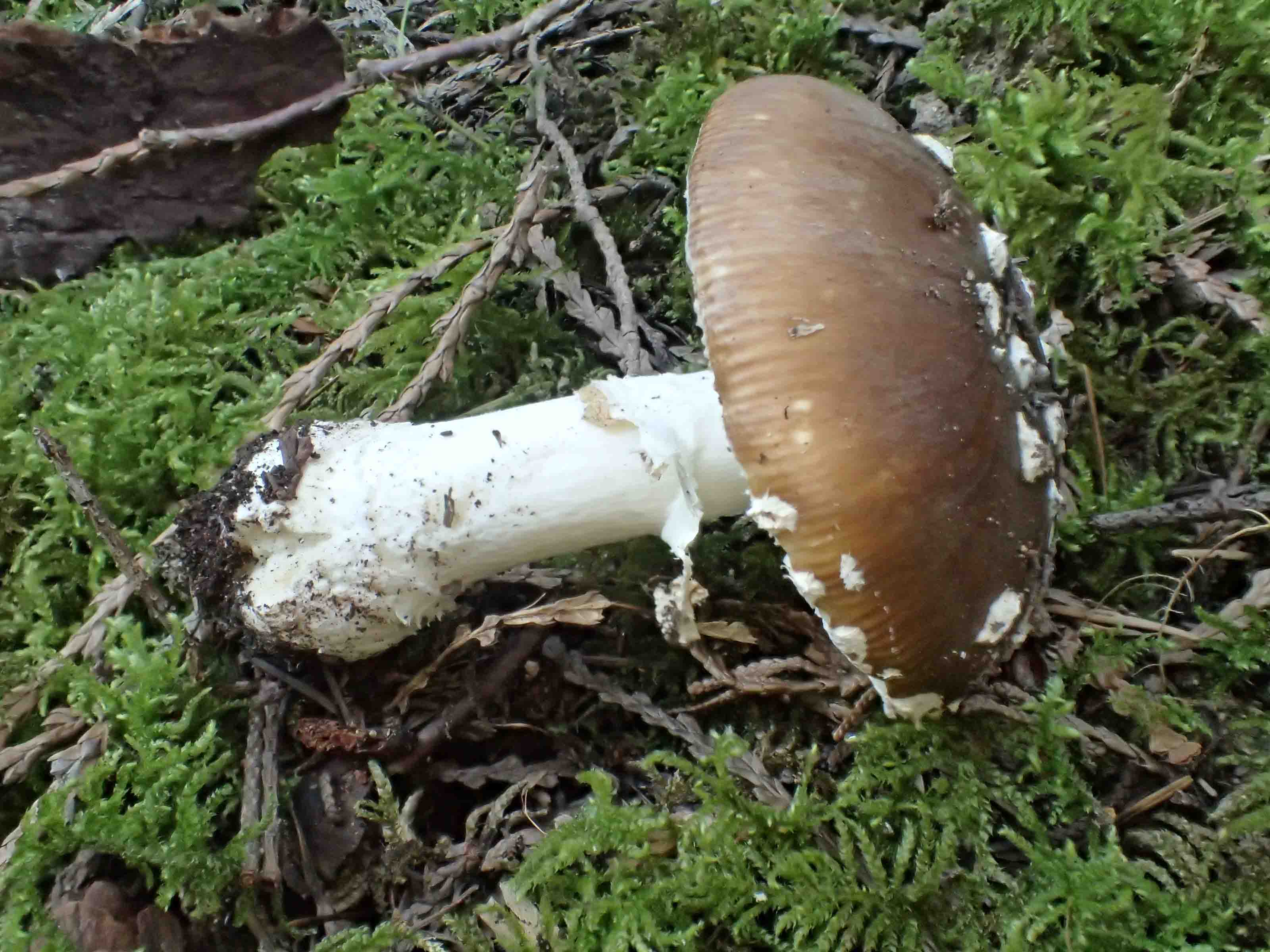Amanita pantherinoides — Western panther amanita
Left image: Western panther amanita12, dark-capped form, photograph by Adolf Ceska.
Right image: Western panther amanita13 photograph by Adolf Ceska.
Odour: Not distinctive.
Cap: 5–10 cm in diameter, rounded when young and then expanding to become convex to almost flat. The colour is some shade of brown, often dark to middle brown at the centre, fading with age to a lighter brown to beige. Some specimens have lighter beige caps throughout their development. The surface is smooth and can be a bit viscid when wet. The margin becomes distinctly radially grooved. The cap is covered by well-spaced whitish warts of veil tissue. These warts wipe off easily by hand or with rain.
Gills: Crowded to quite close. They are narrowly to broadly attached to the top of the stem, and with age will become free of the stem. The colour is white.
Stem: 5–11(–18) cm long x 1–2 cm wide, widened at the base to form a bulb that is up to 3 cm wide. The colour is white throughout.
Ring or veil: A well-developed ring connects the cap margin with the stem when young, and remains on the stem as a ‘skirt’. This is white.
Cup (volva): Tightly appressed to base of stem except at its top, where it usually folds out to form a narrow collar or rim around the stem (shown in 'Additional images', light capped form). Some flat pieces of veil may adhere to the stem above the cup.
Spores: 9.5–13 x 6–9 µm, smooth, not reacting in an iodine solution.
Habitat: In many types of forests, common in city landscapes, with hardwoods and with conifers. Ectomycorrhizal.
Geographic distribution: Known from western North America. Due to confusion with closely related European and eastern North American species, the range of this species is not yet exactly known.
The name Amanita gemmata is used for another similar toxic species in the Pacific northwest, distinguishable by its creamy yellow to tan cap that is barely grooved about its margin.
Toxins: The main toxins are ibotenic acid and its metabolite, muscimol9. Ibotenic acid produces central nervous system excitatory effects while muscimol produces inhibitory effects. The western panther and the fly agaric Amanita muscaria both have both toxins but based on patient symptoms, relative toxin concentrations may differ across mushroom species10. Western panthers have been more likely to make patients comatose, suggesting that panther mushrooms contain comparatively more of the muscimol that suppresses the parasympathetic nervous system. Toxin concentrations may be higher in western panther amanitas than in the fly agaric11.
Symptoms: Time to onset is 30-180 minutes after consumption6 with peak effects in 2 to 5 hours. Confusion, vomiting, bizarre dreams, seizures, alternating hysteria, delirium and lethargy or coma last for several hours. Recovery usually follows 4 to 12 hours after first symptoms, longer with larger ingestions.
Treatment: Contact your regional Poison Control Centre if you or someone you know is ill after eating western panther mushrooms. Poison centres provide free, expert medical advice 24 hours a day, seven days a week. If possible, save the mushrooms or some of the leftover food containing the mushrooms to help confirm identification.
Poison Control:
British Columbia: 604-682-5050 or 1-800-567-8911.
United States (WA, OR, ID): 1-800-222-1222.
When dogs and cats eat and are poisoned by western panther amanitas, they usually recover unless over-treated11. As in humans, pets may vomit, undergo seizures or become comatose. In response to the symptoms, pets have sometimes been given atropine, which makes symptoms worse, occasionally even killing the victim. Pets that would otherwise have recovered in ~12 hours have been euthanized because they appeared to be in pain or were comatose. Recommended supportive treatment includes leaving the pet in a quiet, dark place and making sure that its respiratory tract stays clear to prevent aspiration of vomit11.
Cases: Humans from toddlers to the elderly have been sickened by western panther amanitas8. The western panthers are one of the more common causes of poisoning by mushrooms in our region. Fatalities from exposure have been rare although an individual in British Columbia died due to aspiration of vomit7.



